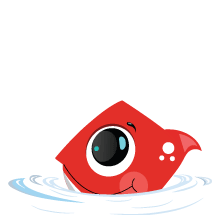Is your child having enough WaterPlay & ActivePlay swimming activity?
- Finns BSC
- Sep 14, 2019
- 3 min read

Waterplay & Activeplay swimming activity is important to many aspects of child health and development. In babies and young children, lack of physical activity is a risk factor for many health problems such as high blood pressure, weight gain, excess body fat, respiratory difficulties, social difficulties, cognitive dissonance, executive function disorder and many more. Moreover, the health benefits of physical activity extend well beyond physical health, having a positive impact on the domains of motor skills, psychological well-being, cognitive development, social competence and emotional maturity.
Until recently, it was generally assumed that babies and young children were naturally physically active. In the last 10 years or so, it has become evident that many babies and young children do not participate in sufficient physical activity to remain healthy. A study recently conducted in 2014, by the Woon et al. of Department of Nutrition and Dietetics, Universiti Putra Malaysia, assessing 293 primary school children in Selangor, almost all children (96.5%) were physically inactive.
A Malaysian study in 2014 by Wafa et al. comparing physical activity between obese and non-obese children with an average age of 9 years, found that the level of physical activity was extremely low in both groups. Both groups of children spent about 11-12 hours per day engaging in sedentary behaviour.
Waterplay & Activeplay swimming activity is a natural and life-long activity that should be encouraged from birth. Parents and/or caregivers are encouraged to provide daily Waterplay & Activeplay swimming activity opportunities incorporating developmentally-appropriate activities which promote motor skills. Both structured and unstructured play activity opportunities should be provided in safe water environments and the emphasis should be on “fun” and “participation” rather than competition.
Although there is a strong consensus that more physical activity is better, there is insufficient evidence of the precise “dose” or amount and intensity of physical activity required for optimal development in early childhood. Difficulties in accurately measuring the unique physical activity patterns of young children come in part from the fact that babies and young children spend their time in a range of different settings (home, childcare with trained or untrained staff, a preschool with varying programs, etc.) and that self-reports are inappropriate at this age.
Despite the sparse amount of research on physical activity in pre-schoolers, there is enough evidence to suggest that, once they are able to walk, they spend too much of their time sedentary and not enough time in moderate-to-vigorous activity.
Physically active children also have increased concentration and enhanced attention spans when compared to their less active peers. The research find that fitness is related to the ability to inhibit attention to competing stimuli during a task, an ability that can help children stay focused and persevere to complete an assignment.
Finns Bsc adopts QidzMov & Joylearn WaterPlay, ActivePlay Swimming activities for babies & children. Our guidance emphasises the importance of creating JOY OF LEARNING in learning how to swim, through the child's cognitive and physical development, as well as social emotion enrichment. There is an emphasis on physical play activity. Play, nonetheless, is a serious business, at least for our educators, because it gives children vital skills in how to learn.
"Teach a child to swim and he will learn how to move in the water. Teach a child with THE JOY OF LEARNING, and he will acquire not only the skills to swim but a LIFETIME PASSION!" - Bryan Yap (Founder of Finns BSC, QidzMov & JoyLearn)





























Comments